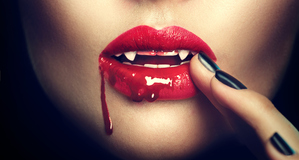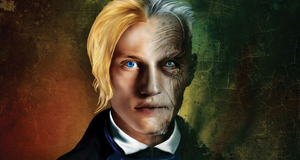Bram Stoker's Dracula: A Reflection and Rebuke of Victorian Society
By
2010, Vol. 2 No. 02 | pg. 1/2 | »
KEYWORDS:
Bram Stoker’s now legendary novel, Dracula, is not just any piece of cult-spawning fiction, but rather a time capsule containing the popular thoughts, ideas, and beliefs of the Victorian era that paints an elaborate picture of what society was like for Bram Stoker’s generation. The dated ideas reflected in Dracula focus primarily on the concepts of lust, sex, and evil as they were viewed during the late 19th and 20th century in what can be viewed as a strongly conservative society. At the time, sex and homosexuality were controversial topics, with emphasis constantly put upon the importance of using caution and awareness when involving such matters and encouraging an overall chaste and modest lifestyle. Such beliefs are boldly represented throughout the book, and often center on the glorifying resistance of temptation while advising against the inevitable temptation to “taste the forbidden fruit”. However, it is important to explore the views and atmosphere of the time period of Dracula's writing to better understand how the legendary “evil” that is Dracula came to be. A result of common Victorian-era fears and Stoker’s own personal views on sex and homosexuality, Dracula is a marvel stemming from many sources.Dracula was written and published before the suffragette movement had “taken off” (Levin 14) during the early-mid 20th century, leaving the expectations and standards for women extremely limiting. Though society maintained strict social standards and expectations for both sexes, men were permitted many more freedoms and pleasures than their female counterparts. The patriarchal tendencies and views of the Victorian society further enforced male superiority and dominance over women (therefore automatically granting them the most freedoms), which in turn also provided countless excuses to justify male sexuality and carnal urges; especially those which women were expected to suppress and constantly refrain from expressing. It was unheard of for a female to be sexually assertive in any way, and such an idea would likely have been a very disturbing and frightening concept to a conservative society, seeing as it was deemed unnatural for and decent lady to behave in such a manner. The theory justifying the abnormality of a female sex drive is that “male sexual pleasure (is) necessary for reproduction and female pleasure (is) not, (therefore) sexual pleasure (is) the sole providence of men,” (Weiman and Dionisapoulas 34; Lyndon 202; Bohn 25). The mentality ultimately supported the conclusion that the female sex drive has no purpose and, therefore, should not exist. If it was, in fact apparent, one can assume the women would be chastised for being ”unnatural”, and most “unnatural” occurrences of the Victorian era could only be explained by the workings of “evil” forces (chiefly Satanic powers). The three mistress vampires encountered in Dracula’s castle “represent all the qualities of how a woman should not be; voluptuous and sexually aggressive” (Pektas 1). A main advocate of Stoker’s novel summarizes and epitome of the mixed feelings and emotions which would potentially have surfaced in a situation where the man is confronted by the woman: “The fair girl went on her knees and bent over me, fairly gloating. There was a deliberate voluptuousness which was both thrilling and repulsive, and as she arched her neck, she actually licked her lips like an animal, till I could see in the moonlight the moisture shining on the scarlet lips and on the red tongue as it lapped the white, sharp, teeth” (Stoker 50). This particular passage describes the mixed feelings men had towards forward women; temptation made the “unnatural” occurrence of female sexual advances desirable (as it was the “forbidden fruit”), yet from a God-believing gentleman’s standpoint, it was purely evil and almost animalistic. Alluding to the fact that, again, a man’s sexual attraction was not entirely his own fault or “responsibility” (per say), this passage also insinuates that women can only be seductively appealing when deliberately tempting a man to “take the forbidden fruit” himself; another reference to evil’s association with a woman’s sexuality. Even if a woman tempted a man and he took the bate, it would still be considered the woman’s fault for defying the set social expectations for proper ladies, as the men could not easily control what was natural to them. Expectations and standards concerning ladylike behavior were very confining and limited the expression of many natural emotions and freedoms: “A woman could not show her legs or even say ‘leg’. Even pianos had ‘limbs’, and those (wore) fluffy coverings so as not to be seen. (Neither) ‘leg’ nor ‘breast’ could be (spoken) in polite company” (Levin 103). Rules such as the above stated show just how ridiculous and rigid Victorian’s standards for ladies could become. The importance of these “rules” can most likely be accredited to the fact that to their male counterparts, women were a reputation of purity, vulnerability, weakness, and naïve innocence. If a woman were ever to reverse the roles and become “sexually aggressive”(Pektas 1) and assertive about her desires, her image of chaste fragility and submissive dependence upon men would be shattered, diluting the superior, dominant image of men, as well. One can assume that women who were, in fact, more sexually open and assertive were labeled as having “tainted” their innocence with the deadly sin of “lust”, and were surely on an unholy path to damnation. When Lucy Westerna becomes “tainted” with the evils of Dracula (thus becoming a “lusty” representation of the female figure), her overall mannerisms are described as having a “cold-bloodedness”(Stoker 240) to them, greatly contrasting with the previous descriptions of her loving and virtuous demeanor when she was chaste and conservative. The concept of “evil” incorporated with aggressive sexual behaviours and sexual temptations very much plays into the evil and appalling behaviors of Dracula. The beliefs of Stoker’s generation magnified the already obscene tendencies of the character himself, adversely creating a shock-factor amongst the Victorian audience, making an epic contribution to the controversial views of sex and sexuality within the society. Women’s rights in a heterosexual relationship were not nearly as prominent an issue as the ongoing conflicts over the concept of homosexuality, which Stoker was witness to on a first hand account. It was a very serious matter, especially in an age when anything out of the ordinary was considered to be “unnatural” and, again, to be “unnatural” meant to be against God’s will (what was “normal”), therefore making it evil and wrong. Homosexuality was, in fact, so serious a matter within society that it was even considered to be a crime, punishable by imprisonment if tried and found guilty of participating in homoerotic behaviors. Some whom were “(found) guilty” of “committing acts of gross indecency” (ibid 83; Pektas 7) could be “convicted to the maximum of two years in jail with hard labour (ibid 83; Pekats 7). Further adding to the shock-factor and controversy of the novel, an underlying homoerotic theme is carefully laid down by Stoker via many homosexual references, insinuations, and symbolism throughout the book. Almost as though playing directly off of society’s fears of the “unnatural”, the count seems to be an exaggerated representation of the concept concerning the “evils” of abnormality and how it can stem from one source and infect the surrounding society with discord and misfortune. Mirroring the social fears and distaste towards homosexuality, the count embodies the concept of the “abnormal” mingling among a “normal” society, chiefly by posing as a “sexual threat who threatens to destroy the moral order and turn (his surroundings) into a depraved society through his violation of people” (Pektas 2). Most prominent among his offences, the count violates men “by penetrating and sucking the blood” which is viewed as “a coding of homosexual acts” (Pektas 2). This reinforces the play upon the apprehensive feelings towards the acceptance of what is “different”, as it is an example of how one evil thrown into a “pure” society can cause a large-scale onslaught of chaos and corruption. A major underlying sexual connotation Stoker uses as an implication of homosexuality is the excessive use of blood throughout the novel itself. Blood and sexuality within Dracula were very closely related, “reflecting the Victorians belief that blood is sperm” therefore, when feeding upon blood and exchanging bodily fluids “(it) can be associated with intercourse” (Pektas 2). The Victorians most likely concluded that blood did indeed have such an intimate relation to spermatic fluids as a result of shared biological characteristics between the two substances themselves. Sexually transmitted diseases, such as syphilis, had been just recently discovered, and were still relatively enigmatic to a dreading society. Discerning that blood could pass disease/ (identified as “bad blood” at the time) from one being to the next and then discovering that spermatic fluids held the same ability (regarding STDs), a connection between the two was inevitably made, such as “(linking) sexuality to syphilis, and (also) to blood” (Anttonen 9). It was “a time when sexually transmitted diseases (had become) a part of everyday life (Anttonen 9) as a result of being one of the newest and most disturbing scientific discoveries made at that point in time. Thus it became a popular conversational and debatable topic among the intellectual, reinforcing the value of the belief via repetition and the occasional misinterpretation (which distorted its severity and caused it to become more intensely feared). The emphasis upon the evils of carnal sexuality and lust-driven behaviors in Dracula was derived from various influential sources in the author’s life itself. Fashioning the character Dracula after a real-life historical figure, Bram Stoker’s novel increased the fame of Romanian tyrant, Vladislav Dracula. Stoker’s fascination with the brutality of Dracula began when he “discovered (Vlad Dracula) while researching his novel at the North Yorkshire Library” (Bohn 14) and decidedly was inspired enough to title the main character, and even the very book itself, after the prince. One can assume that Stoker, showing great interest and curiosity in all things sexual, was fascinated not by Dracula’s economic of political achievements during his rule, but by the appalling methods of torture he used to turn sexuality into a concept fixedly associated with pain and evil within the minds of his subjects. “Vlad Dracula (presented) a sadistic sexuality in delivering punishment for moral crimes such as infidelity” (Bohn 14), and often the punishment involved the mangling of the sexual organs or impalement. Using enigmatic approaches to sustain power and control over the minds of his people, Vlad Dracula (also known as “Vlad the Impaler”) would punish such minor sins as an unfaithful wife by “(cutting out) her sexual organs” and “(skinning) her alive” (Bohn 14). A punishment to maidens who did not remain virgins until marriage was to have the “nipples cut from (the) woman’s breasts or a red hot iron shoved through the vagina until the instrument emerged from the mouth” (Bohn 14), the latter containing several sexual connotations involving the penetration and cleansing of sexual evil via the mouth (oral sex) or vagina (vaginal sex). In general, Vlad the Impaler emphasized the importance of remaining pure and chaste, though taking a much more extremist approach than the Victorians did. Again, these heinous acts of “retribution” further enforced the evils of unruly lust by demonstrating how such qualities bring pain and misfortune upon those who engage in such sins. It is incredibly ironic that Stoker would use such an extremist as an inspiration for his sadistic character, though it furthers the effect which he intended to create by adding an even more sinister twist to the contrast between what was “good and pure” (by Victorian standards), and what was considered to be “vile and unholy.”Continued on Next Page » Suggested Reading from Inquiries Journal
Inquiries Journal provides undergraduate and graduate students around the world a platform for the wide dissemination of academic work over a range of core disciplines. Representing the work of students from hundreds of institutions around the globe, Inquiries Journal's large database of academic articles is completely free. Learn more | Blog | Submit Latest in Literature |


















